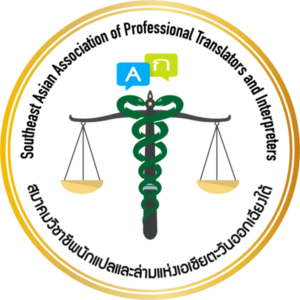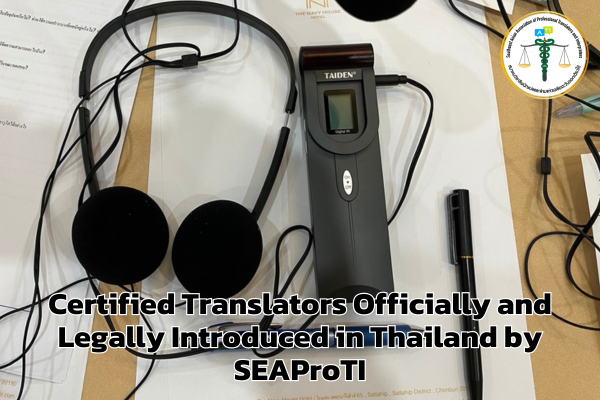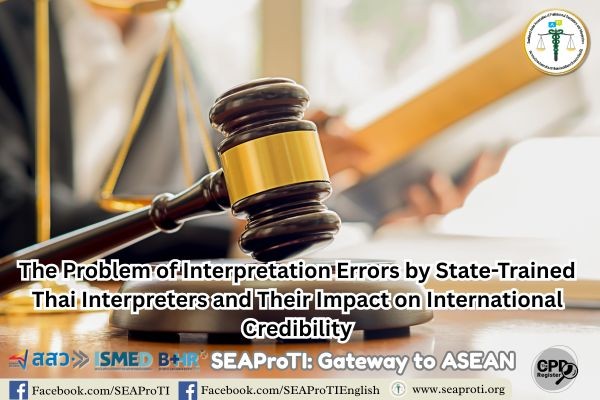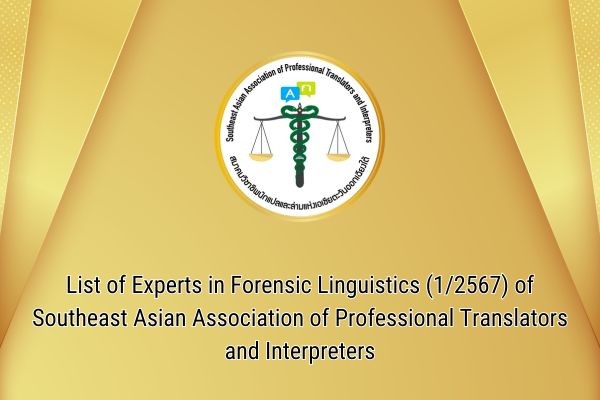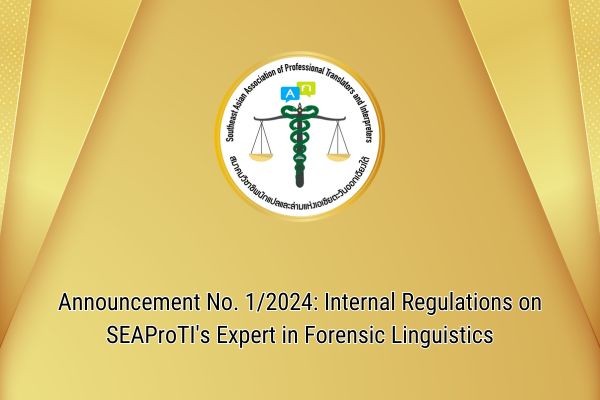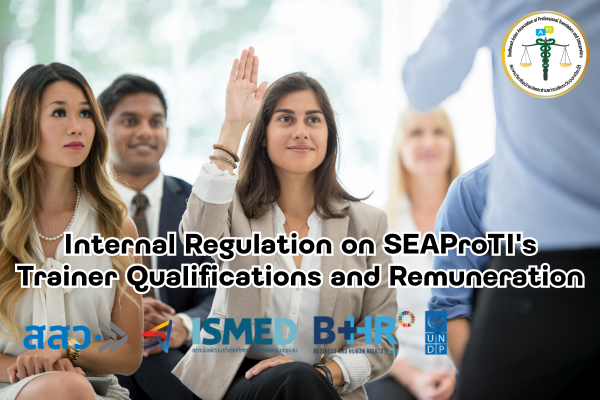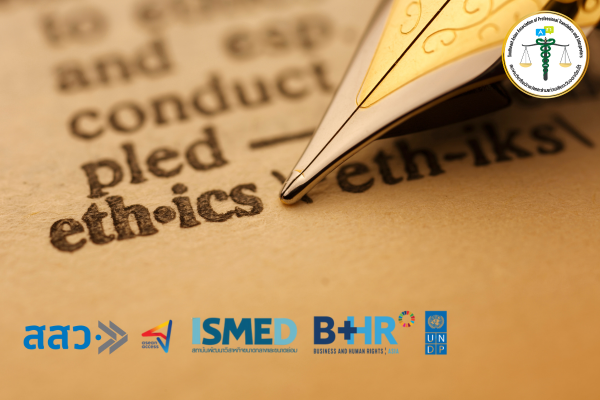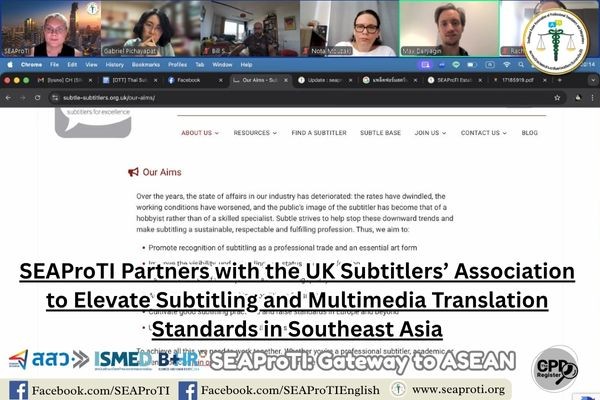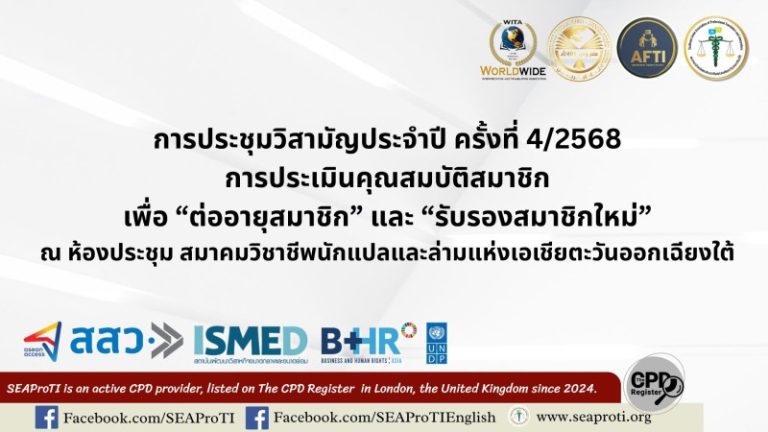Revisiting the Concept of Semantics in the Age of Artificial Intelligence:
Machine Translation Systems as “Communicative Agents”
21 November 2025, Bangkok – In contemporary translation and interpreting studies, Machine Translation (MT) and Large Language Models (LLMs) continue to be perceived in a reductive manner as mere “word-swapping devices” that lack genuine semantic understanding. This article aims to challenge such a view by proposing a philosophical and cognitive framework in which “meaning” is not conceived as an internal property of the individual mind but as a social achievement that emerges from interaction among linguistic agents, both human and artificial.
Drawing on the work of Wittgenstein, Umberto Eco, Quine, Dennett, and Floridi, this paper argues that machine translation systems should be understood as communicative agents that participate in human “language games,” rather than as passive engineering tools. It further proposes that the crucial question is not whether machines “truly understand” meaning, but rather how they participate in the construction of meaning and in the coordination of understanding between human beings.
Keywords: Semantics, Machine Translation, LLMs, Language Games, Intentional Stance, Artificial Agency, Translation Studies, Interpreting Studies
1. Introduction
In contemporary society, the rapid development of Artificial Intelligence, particularly through Large Language Models (LLMs), has brought about profound structural changes in the fields of translation and interpreting. Nevertheless, many professionals continue to view machine translation systems as purely statistical tools that merely perform lexical substitution between languages without any form of “real” semantic understanding.
This attitude reflects a reductionist perspective often applied not only to machines but also to human cognition, in which complex processes of meaning-making are reduced to the mechanical manipulation of symbols. The author argues that such a view not only underestimates the potential of current technologies, but also fundamentally misrepresents the nature of “meaning” and “understanding” in human communication.
2. The Misconception of “Real Semantics”
The belief that machines cannot possess “real semantics” is grounded in the assumption that meaning is an internal mental content—an object located within the human mind and absent in machines. However, this assumption has long been challenged in philosophy.
Wittgenstein proposed that the meaning of a word does not reside in the word itself or in the private mind of the speaker but emerges from its use within language games in a given community (Wittgenstein, 1953). Umberto Eco similarly argued that meaning is a process of negotiation among signs, contexts, and cultural conventions (Eco, 1976).
Quine further questioned the stability of meaning and reference, demonstrating that they are not fixed entities but are instead dependent on interpretive frameworks and networks of belief within a society (Quine, 1960).
From this perspective, the question “Do LLMs really understand meaning?” is built upon a flawed metaphysical foundation, since even human beings do not possess meaning as an essential, static substance.
3. The Intentional Stance and Machine Participation in Language Games
Daniel Dennett introduced the notion of the intentional stance, which explains how humans interpret and predict the behavior of complex systems by treating them as if they had beliefs, desires, and intentions (Dennett, 1987), even when such states may not exist internally.
For instance, when a user says to an AI, “You misunderstood me, try again,” the user is not necessarily attributing consciousness to the system. Rather, this mode of speech allows the interaction to remain meaningful and productive. In other words, treating AI as an interlocutor enables communication to function.
Luciano Floridi’s concept of artificial agency reinforces this view. According to Floridi, machines can perform meaningful roles in human practices without possessing human-like consciousness or cognition (Floridi, 2013). What matters is not what a system is internally, but what it does in relation to human systems.
Through these perspectives, machine translation systems can be viewed as active participants in language games, rather than silent, passive instruments.
4. Machine Translation Systems as Communicative Agents
In practice, machine translation and speech translation systems do far more than simply convert text from one language into another. They influence decision-making processes, shape interpretations, support business negotiations, facilitate medical communication, and impact legal procedures.
For these reasons, such systems cannot be described merely as technical artefacts. They operate as mediators of meaning within networks of human interaction, thereby contributing to the construction of intersubjective understanding.
Consequently, both Translation Studies and Interpreting Studies must expand their scope to investigate technological systems as co-creators of meaning, rather than viewing them solely as competitors or auxiliary tools.
5. Meaning as a Social Achievement
When meaning is understood as a social achievement rather than an internal property, the primary question shifts from:
“Do machines understand meaning?”
to:
“To what extent do machines contribute to the coordination of understanding among human beings?”
If translation systems can enable effective communication, reduce semantic misunderstanding, and facilitate mutual comprehension, then they already perform valuable semantic labor within human society.
From this viewpoint, meaning does not reside exclusively within individual minds but emerges between language users, technological systems, and socio-cultural contexts.
6. Conclusion
Although Artificial Intelligence does not “understand” meaning in the same way that humans do, meaning itself is not an exclusive possession of the human subject. Rather, it is a product of dynamic interaction within social systems.
Machine translation and interpreting technologies are already participating in this process and should therefore be examined as communicative agents within contemporary scholarship. Recognizing this reality does not diminish the role of human translators and interpreters. Instead, it opens new theoretical space for rethinking the evolving relationship between human agency and technological mediation in the twenty-first century.
References
- Dennett, D. C. (1987). The Intentional Stance. MIT Press.
- Eco, U. (1976). A Theory of Semiotics. Indiana University Press.
- Floridi, L. (2013). The Philosophy of Information. Oxford University Press.
- Quine, W. V. O. (1960). Word and Object. MIT Press.
- Wittgenstein, L. (1953). Philosophical Investigations. Blackwell.
About Certified Translators, Translation Certifiers, and Certified Interpreters of SEAProTI
The Southeast Asian Association of Professional Translators and Interpreters (SEAProTI) has formally announced the qualifications and requirements for registration of Certified Translators, Translation Certification Providers, and Certified Interpreters in Sections 9 and 10 of the Royal Gazette, published by the Secretariat of the Cabinet, Office of the Prime Minister of Thailand, on 25 July 2024 (Vol. 141, Part 66 Ng, p. 100). Certified Translators, Translation Certification Providers, and Certified Interpreters
The Council of State has proposed the enactment of a Royal Decree, granting registered translators and recognized translation certifiers from professional associations or accredited language institutions the authority to provide legally valid translation certification (Letter to SEAProTI dated April 28, 2025)
SEAProTI is the first professional association in Thailand and Southeast Asia to implement a comprehensive certification system for translators, certifiers, and interpreters.
Head Office: Baan Ratchakru Building, No. 33, Room 402, Soi Phahonyothin 5, Phahonyothin Road, Phaya Thai District, Bangkok 10400, Thailand
Email: hello@seaproti.com | Tel.: (+66) 2-114-3128 (Office hours: Mon–Fri, 09:00–17:00)
การทบทวนแนวคิดเรื่องความหมาย (Semantics) ในยุคปัญญาประดิษฐ์:
ระบบแปลภาษาอัตโนมัติในฐานะ “ตัวแสดงทางการสื่อสาร” (Communicative Agent)
ผู้เขียนอภิปรายแนวคิดของ Wittgenstein, Umberto Eco, Quine, Dennett และ Floridi เพื่อสนับสนุนข้อเสนอว่าระบบแปลภาษาอัตโนมัติควรถูกทำความเข้าใจในฐานะ ตัวแสดงทางการสื่อสาร (communicative agents) ที่เข้ามามีส่วนร่วมใน “เกมภาษา” (language games) ของมนุษย์ มิใช่เพียงเครื่องมือทางวิศวกรรม บทความนี้ชี้ให้เห็นว่าคำถามสำคัญจึงไม่ใช่ “เครื่องจักรเข้าใจหรือไม่” แต่คือ “เครื่องจักรมีบทบาทต่อการสร้างความหมายและการประสานความเข้าใจระหว่างมนุษย์อย่างไร”
คำสำคัญ (Keywords): Semantics, Machine Translation, LLMs, Language Games, Intentional Stance, Artificial Agency, Translation Studies, Interpreting Studies
1. บทนำ
ในสังคมร่วมสมัย การพัฒนาอย่างก้าวกระโดดของปัญญาประดิษฐ์ โดยเฉพาะแบบจำลองภาษาขนาดใหญ่ (Large Language Models – LLMs) ได้ก่อให้เกิดการเปลี่ยนแปลงเชิงโครงสร้างต่อวงการแปลและล่ามอย่างไม่อาจปฏิเสธได้ อย่างไรก็ตาม นักวิชาชีพจำนวนมากยังคงยึดถือมุมมองที่ว่าระบบแปลภาษาอัตโนมัติเป็นเพียงเครื่องมือทางสถิติ ที่ทำหน้าที่สลับคำ (lexical substitution) ระหว่างภาษาโดยปราศจาก “ความเข้าใจที่แท้จริง” ในเชิงความหมาย
ทัศนคติลักษณะนี้สะท้อนแนวคิดแบบ reductionism ที่มักถูกนำมาใช้ทั้งกับเครื่องจักรและมนุษย์ กล่าวคือ การลดกิจกรรมอันซับซ้อนของการแปลลงเหลือเพียงการจัดการสัญลักษณ์เชิงกล (symbol manipulation) เท่านั้น ผู้เขียนเห็นว่าแนวคิดเช่นนี้ไม่เพียงลดทอนศักยภาพของเทคโนโลยี แต่ยังลดทอนความเข้าใจเชิงลึกเกี่ยวกับธรรมชาติของ “ความหมาย” และ “ความเข้าใจ” ในมนุษย์ด้วยเช่นกัน
2. ความเข้าใจผิดเกี่ยวกับ “ความหมายที่แท้จริง” (Real Semantics)
ความเชื่อที่ว่าเครื่องจักร “ไม่มีความหมายที่แท้จริง” ตั้งอยู่บนสมมติฐานว่าความหมายคือสิ่งที่มีอยู่ภายในจิตใจ (internal mental content) เสมือนเป็นวัตถุที่มนุษย์ครอบครองและเครื่องจักรไม่มี อย่างไรก็ตาม แนวคิดนี้ถูกท้าทายมาอย่างยาวนานในทางปรัชญา
Wittgenstein เสนอว่า ความหมายของคำไม่ได้อยู่ในตัวคำเองหรือในจิตใจของผู้พูด แต่เกิดจากการใช้งานของคำนั้นภายใน “เกมภาษา” (language games) ของชุมชน (Wittgenstein, 1953) ขณะที่ Umberto Eco มองว่าความหมายเป็นกระบวนการ “ต่อรอง” (negotiation) ระหว่างสัญญะ บริบททางสังคม และข้อตกลงทางวัฒนธรรม (Eco, 1976)
Quine ยังก้าวไปไกลกว่านั้น โดยแสดงให้เห็นว่าความหมายและการอ้างอิง (reference) ไม่เคยเป็นสิ่งคงที่ แต่ขึ้นอยู่กับกรอบการตีความ (framework of interpretation) และเครือข่ายความเชื่อของสังคมนั้น ๆ (Quine, 1960)
จากมุมมองนี้ การตั้งคำถามว่า “LLMs เข้าใจความหมายจริงหรือไม่” จึงอาจเป็นคำถามที่ตั้งอยู่บนฐานคิดที่คลาดเคลื่อนในเชิงอภิปรัชญา เพราะแม้แต่มนุษย์เองก็ไม่ได้ครอบครองความหมายในแบบที่เป็นแก่นสารตายตัว (essential substance)
3. Intentional Stance และการมีส่วนร่วมของเครื่องจักรในเกมภาษา
Daniel Dennett เสนอแนวคิดเรื่อง intentional stance ซึ่งชี้ให้เห็นว่า ในการทำความเข้าใจและทำนายพฤติกรรมของระบบที่ซับซ้อน มนุษย์มักปฏิบัติต่อระบบนั้น “ราวกับ” มันมีเจตจำนง ความเชื่อ และเป้าหมาย (Dennett, 1987) แม้ในความเป็นจริงระบบนั้นอาจเป็นเพียงกลไกทางกายภาพก็ตาม
ตัวอย่างเช่น เมื่อผู้ใช้กล่าวกับ AI ว่า “คุณเข้าใจฉันผิด ลองใหม่อีกครั้ง” เขาไม่ได้กล่าวเช่นนั้นเพราะเชื่อว่า AI มีจิตสำนึก แต่เพราะกรอบทางภาษาเช่นนี้ทำให้การปฏิสัมพันธ์ “ดำเนินต่อไปได้อย่างมีความหมาย” กล่าวคือ การปฏิบัติต่อ AI ในฐานะคู่สนทนา (interlocutor) ทำให้การสื่อสารมีประสิทธิภาพ
Luciano Floridi เสนอแนวคิดเรื่อง artificial agency โดยชี้ว่า เครื่องจักรสามารถมีบทบาทเชิงปฏิบัติการในสังคมมนุษย์ได้ โดยไม่จำเป็นต้องมีสติแบบมนุษย์ (Floridi, 2013) สิ่งสำคัญไม่ใช่ “สิ่งที่มันเป็น” แต่คือ “สิ่งที่มันทำ” และ “วิธีที่มันส่งผลต่อระบบความสัมพันธ์ของมนุษย์”
เมื่อพิจารณาจากกรอบคิดทั้งสองนี้ ระบบแปลภาษาอัตโนมัติจึงควรถูกมองว่าเป็นผู้มีบทบาทในเกมภาษา ไม่ใช่เพียงเครื่องมือเงียบ ๆ ที่ทำงานอยู่เบื้องหลัง
4. ระบบแปลภาษาในฐานะตัวแสดงทางการสื่อสาร (Communicative Agent)
ในทางปฏิบัติ ระบบ MT และ Speech Translation มิได้เพียงแปลงข้อความจากภาษาหนึ่งไปสู่อีกภาษาเท่านั้น หากแต่มีผลต่อการตัดสินใจ การตีความ การเจรจาทางธุรกิจ ความเข้าใจทางการแพทย์ และกระบวนการทางกฎหมาย
สิ่งเหล่านี้ทำให้ระบบแปลไม่ได้เป็นเพียง technical artefact แต่เป็น mediator ของความหมาย ซึ่งเข้าไปมีบทบาทในกระบวนการสร้างความเข้าใจร่วมระหว่างมนุษย์ (intersubjectivity)
ด้วยเหตุนี้ Translation Studies และ Interpreting Studies จึงควรขยายขอบเขตการศึกษาไปสู่การวิเคราะห์บทบาทของเทคโนโลยีในฐานะ “ผู้ร่วมสร้างความหมาย” (co-creator of meaning) มิใช่แค่คู่แข่งของมนุษย์หรือเครื่องมือเสริมเท่านั้น
5. ความหมายในฐานะผลผลิตทางสังคม
เมื่อมองความหมายในฐานะ social achievement มากกว่าคุณสมบัติภายในตัวบุคคล คำถามสำคัญจึงเปลี่ยนจาก:
“เครื่องจักรเข้าใจหรือไม่?”
ไปสู่:
“มันมีส่วนช่วยให้การประสานความเข้าใจระหว่างมนุษย์ เกิดขึ้นหรือไม่ มากน้อยเพียงใด?”
หากระบบแปลสามารถช่วยให้มนุษย์สื่อสารกันได้อย่างมีประสิทธิภาพ แม่นยำ และลดความขัดแย้งเชิงความหมายได้ แสดงว่ามันได้เข้าไปมีบทบาทในกระบวนการสร้าง “ความหมายร่วม” แล้วในระดับหนึ่ง
จากมุมมองนี้ “ความหมาย” จึงมิได้จำกัดเฉพาะในตัวมนุษย์ แต่เป็นสิ่งที่เกิดขึ้น ระหว่าง ผู้ใช้ภาษา ระบบเทคโนโลยี และบริบททางสังคม
6. บทสรุป
แม้ปัญญาประดิษฐ์จะไม่เข้าใจความหมายในแบบเดียวกับมนุษย์ แต่ความหมายเองก็ไม่ใช่แก่นสารที่เป็นสมบัติพิเศษของมนุษย์เท่านั้น หากแต่เป็นผลลัพธ์ของการปฏิสัมพันธ์ในสังคม
ระบบแปลภาษาและล่ามอัตโนมัติในปัจจุบันได้เข้าไปมีส่วนร่วมในกระบวนการนี้แล้ว และควรได้รับการศึกษาในฐานะ ตัวแสดงทางการสื่อสาร อย่างจริงจังในเชิงวิชาการ
การยอมรับความจริงข้อนี้ไม่ใช่การลดทอนบทบาทของนักแปลและล่ามมนุษย์ แต่เป็นการเปิดพื้นที่ทางทฤษฎีใหม่ ๆ ที่จะทำให้วิชาชีพเข้าใจบทบาทของมนุษย์และเทคโนโลยีในศตวรรษที่ 21 ได้ลึกซึ้งยิ่งขึ้น
เอกสารอ้างอิง
- Dennett, D. C. (1987). The Intentional Stance. MIT Press.
- Eco, U. (1976). A Theory of Semiotics. Indiana University Press.
- Floridi, L. (2013). The Philosophy of Information. Oxford University Press.
- Quine, W. V. O. (1960). Word and Object. MIT Press.
- Wittgenstein, L. (1953). Philosophical Investigations. Blackwell.
เกี่ยวกับนักแปลรับรอง ผู้รับรองการแปล และล่ามรับรองของสมาคมวิชาชีพนักแปลและล่ามแห่งเอเชียตะวันออกเฉียงใต้
สมาคมวิชาชีพนักแปลและล่ามแห่งเอเชียตะวันออกเฉียงใต้ (SEAProTI) ได้ประกาศหลักเกณฑ์และคุณสมบัติผู้ที่ขึ้นทะเบียนเป็น “นักแปลรับรอง (Certified Translators) และผู้รับรองการแปล (Translation Certification Providers) และล่ามรับรอง (Certified Interpreters)” ของสมาคม หมวดที่ 9 และหมวดที่ 10 ในราชกิจจานุเบกษา ของสำนักเลขาธิการคณะรัฐมนตรี ในสำนักนายกรัฐมนตรี แห่งราชอาณาจักรไทย ลงวันที่ 25 ก.ค. 2567 เล่มที่ 141 ตอนที่ 66 ง หน้า 100 อ่านฉบับเต็มได้ที่: นักแปลรับรอง ผู้รับรองการแปล และล่ามรับรอง
สำนักคณะกรรมการกฤษฎีกาเสนอให้ตราเป็นพระราชกฤษฎีกา โดยกำหนดให้นักแปลที่ขึ้นทะเบียน รวมถึงผู้รับรองการแปลจากสมาคมวิชาชีพหรือสถาบันสอนภาษาที่มีการอบรมและขึ้นทะเบียน สามารถรับรองคำแปหฟลได้ (จดหมายถึงสมาคม SEAProTI ลงวันที่ 28 เม.ย. 2568)
สมาคมวิชาชีพนักแปลและล่ามแห่งเอเชียตะวันออกเฉียงใต้ เป็นสมาคมวิชาชีพแห่งแรกในประเทศไทยและภูมิภาคเอเชียตะวันออกเฉียงใต้ที่มีระบบรับรองนักแปลรับรอง ผู้รับรองการแปล และล่ามรับรอง
สำนักงานใหญ่: อาคารบ้านราชครู เลขที่ 33 ห้อง 402 ซอยพหลโยธิน 5 ถนนพหลโยธิน แขวงพญาไท เขตพญาไท กรุงเทพมหานคร 10400 ประเทศไทย
อีเมล: hello@seaproti.com โทรศัพท์: (+66) 2-114-3128 (เวลาทำการ: วันจันทร์–วันศุกร์ เวลา 09.00–17.00 น.

